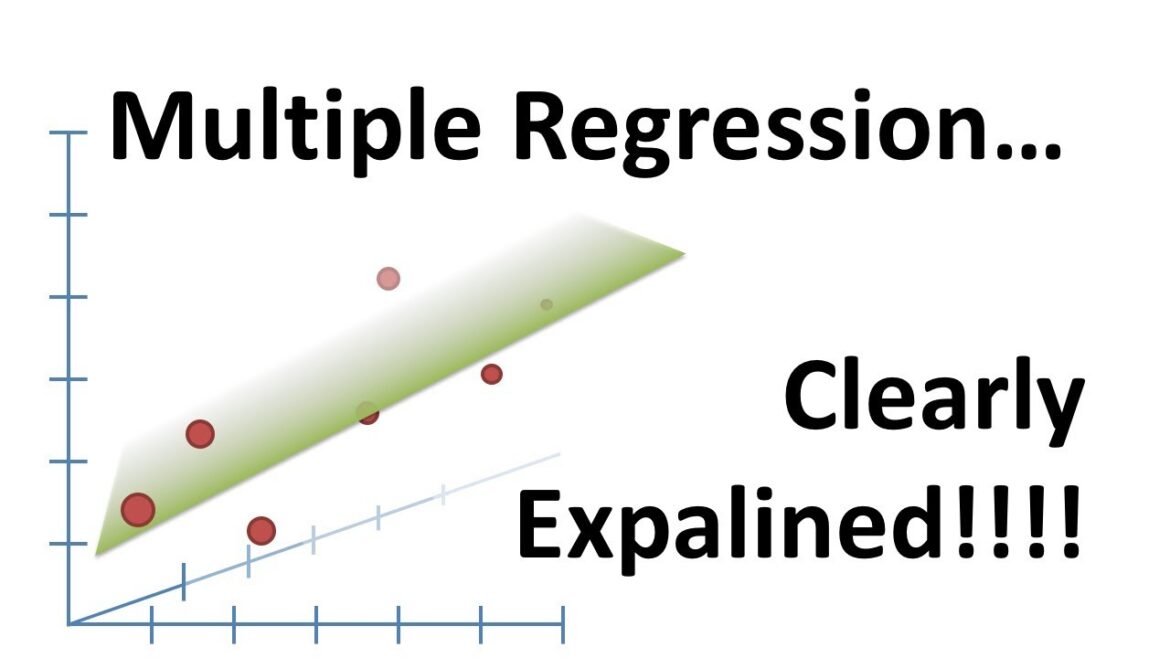Multilinear Regression
Introduction
Multiple linear regression is an extension of simple linear regression that allows for the modeling of the relationship between multiple independent variables and a single dependent variable. In other words, it enables us to predict a continuous outcome based on two or more predictor variables.
Here's how it works and how to implement it:
How it works:
- Model Representation
In multiple linear regression, the relationship between the independent variables X1,X2,...,Xn and the dependent variable y is represented by the equation:
y=β0+β1⋅X1+β2⋅X2+...+βn⋅Xn+ϵ
- y is the dependent variable (the variable we want to predict).
- X1,X2,...,Xn are the independent variables (features).
- β0 is the intercept .
- β1,β2,...,βn are the coefficients .
- ϵ is the error term .
- Objective
The objective is to estimate the coefficients β0,β1,...,βn that minimize the difference between the observed and predicted values of the dependent variable.
- Model Training
We use a dataset with observations for both the independent variables and the dependent variable. The model is trained using techniques like ordinary least squares (OLS) to find the best-fitting line through the data.
- Model Evaluation
After training, the model's performance is evaluated using metrics such as mean squared error (MSE), R-squared, or others, to assess how well the model fits the data and how much variance it explains.
Implementation
Here's how to implement multiple linear regression in Python using scikit-learn:
Import Libraries
import numpy as np
import pandas as pd
from sklearn.model_selection import train_test_split
from sklearn.linear_model import LinearRegression
from sklearn.metrics import mean_squared_error, r2_score
# Step 1: Collect Data
data = pd.read_csv('energy_efficiency.csv')
# Step 2: Explore the Data (omitted for brevity)
# Step 3: Data Preprocessing
X = data[['Relative_Compactness', 'Surface_Area', 'Wall_Area', 'Roof_Area', 'Overall_Height',
'Orientation', 'Glazing_Area', 'Glazing_Area_Distribution']] # Independent variables
y = data[['Heating_Load', 'Cooling_Load']] # Dependent variables
# Step 4: Split Data
X_train, X_test, y_train, y_test = train_test_split(X, y, test_size=0.2, random_state=42)
# Step 5: Create and Fit the Model
model = LinearRegression()
model.fit(X_train, y_train)
# Step 6: Make Predictions
y_pred = model.predict(X_test)
# Step 7: Evaluate the Model
mse = mean_squared_error(y_test, y_pred)
r_squared = r2_score(y_test, y_pred)
print("Mean Squared Error:", mse)
print("R-squared:", r_squared)
# Step 8: Interpret the Coefficients
coefficients = pd.DataFrame({'Variable': X.columns, 'Heating_Load_Coefficient': model.coef_[0],
'Cooling_Load_Coeff

